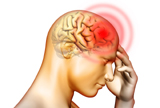Notes on counselling
Depression — a consciousness world-view
Abstract
Depression can be a mood, a symptom or a disease. A consciousness world-view examines depression at various planes of consciousness. Though depression arises on the vital plane, its effects are discernible through its effects on other planes and through their combinations. An access to the Prāṇic Śakti in the inner being, a replacement of the ego by a greater principle and an identity with the Bliss-principle are ways to conquer depression.
Depression is a term that is simultaneously ubiquitous and ambiguous. It can signify different things in different cultures or different poises in the same culture. It might have different meanings, nuances and expressions at different points of an individual’s life.
In the therapeutic setting, what needs to be discerned is whether depression refers to a mood or whether it is a symptom of some disease or whether it is itself an independent disease with major ramifications in the bio-psycho-social sphere.
Depression as mood
Depression can signify normal mood fluctuations. In his 1962 film, Kanchenjungha, Satyajit Ray, one of India’s most prolific filmmakers, showed with brilliance how moods fluctuated with climatic changes in a hill-station. Ray wanted to show how character and Nature were interrelated in mood:
“The idea was to have the film starting with sunlight. Then clouds coming, then mist rising, and then mist disappearing, the cloud disappearing, and then the sun shining on the snow-peaks. There is an independent progression to Nature itself, and the story reflects this (1).”
It is significant that the film ends when the oscillations of mood subside, coinciding with the clearing of mist when all misunderstanding gets solved.
Ray’s analogy was down to earth. Many a time, clients describe their depressive affect using the symbolism of the cloud. Many a time this scribe was told by clients that, like dark clouds looming on the horizon, depressive phases would invade their lives cutting off the sunshine, the source of joy and energy! This is why Light therapy is often useful in seasonal affective disorders where depression occurs at certain times of the year, notably in winter.
Returning to Ray’s analogy, it can be argued that mood fluctuations may not be linked linearly every time with Nature’s movements and subjects can display moods, helplessly incongruent or abjectly incompatible with the expressions in nature. Ray himself made a later film, Ashani Sanket, ‘Distant Thunder’, 1973 where he did the opposite of what he attempted in Kanchenjunga. Nature was shown to be luxuriantly lush while the characters starved and committed inhumanely deplorable acts. Here the glory of Nature failed to revive sufferers of the Great Famine that ravished Bengal in 1943. There are two significances of the ambiguity between the glory of Nature and the abjectly low mood.
The first is the social imbroglio, as actually in 1976, Sen proved how the Great Famine of 1943 that led to the death of millions was artificial and man-made, a result of inflation (2). Naturally, such a man-made calamity would not be rejuvenated by the brightness of Nature.
The second is the psychological paradox that all attempts, including the brightness of Nature cannot succeed in motivating the human mind once depression sets in. We are confronted with a situation where depression is not merely a symbol of a dysthymic mood but a clinical entity, a symptom of an underlying malady (malnutrition in case of the famine) or an illness by its own reckoning.
Depression as a symptom
Depression can be a symptom of an underlying disease. Indeed there is a range of such diseases. The inadequate management of physical pain is one of the important reasons why some subjects opt for voluntary euthanasia. There are conditions like carcinoma of the pancreas that can present with a dramatic picture of depression. Electrolyte imbalances can cause depression which can be corrected by restoring the balance. There are drugs that can precipitate severe depression. Even paradoxically, depression can occur as an idiosyncratic response to sedatives.
There are chronic states of suffering where suicidal ideas may manifest. A classic example is the increase in suicidal gestures in subjects undergoing dialysis ( Perhaps stress could be reduced if the subject had freedom to stop dialysis if wished).
Though the risk of suicide in cancer patients is higher than in the general population, it is also surprising that many serious sufferers of cancer do not commit suicide. More often than not, they zealously motivate themselves to fight all odds till the end. It is as if the response is the opposite of the usual hyper arousal in the classical fight or flight reaction.
Depression as a disease
Depression as an independent disease, per se, has emerged as one of the most important morbidities of modern life. The question may be raised that was such depression as we know today, present in earlier times. The ancient Indian Āyurvedic texts had correct clinical descriptions for schizophrenia. In contrast the classical Sanskrit terms like abasad and bishad signify depression as a mood-state and not as disease. It might be that the spectre of depression in a global scale with which we are confronted today is a relatively new phenomenon in the history of human consciousness.
Depression as a disease has to be carefully differentiated from the normal emotional fluctuations to life’s adversities which have adaptive value, alert individuals and the immediate social group. In depression as a disease, the protective and adaptive value of the mood is degraded. Unlike the normal depressive mood in usual episodes of sadness that occurs not too infrequently in life, subjects suffering from depressive illness may have such episodes unconnected with any distressing life-event; may have associated anxiety that is too distressing; have a persistently painful state of anguish; harbour feelings of hopelessness, helplessness, low self-esteem, guilt-feeling and death wishes; express somatic symptoms, hormonal dysregulation and rhythm disturbances.
Depressive disorders can in many cases switch to the other extreme manic phase of grandiosity, over-confidence, pompousness, aggression and frankly psychotic activities. Thus depression has not only a unipolar but also a bipolar presentation.
A Consciousness world-view
In the consciousness world-view, depression is assessed along different planes of consciousness. Of the three basic planes of consciousness, which have both universal and individual representations, the fluctuations of the mood that lead to both depression and its polar opposite, mania, arise in the plane of life-energy or the vital plane. The physical plane is the one that holds the material substrate of the body. The mental plane is non-material; it represents the realm of ideas, is concerned with cognition and executes its action through a complex of intertwined intelligence and will-power. The vital plane in between is the repertoire of emotions, passions, dynamism and desires. It holds in its bosom contradictory moods and conflicting emotions, a reason why a state of depression can alternate with a state of mania in bipolar subjects. As the vital plane simultaneously contains both the contradictory elements of sadness and aggression, depression in children can manifest through aggression as long as they are unable to cognise depression.
The three planes of consciousness are actually intertwined in the individual so that there are various combinations of the planes. As each individual is unique, so depression can manifest in each individual through different combinations of the planes of consciousness. Actually, even if disequilibrium primarily originates in one plane, the other planes also get involved more or less in accordance with the uniqueness of each individual. The uniqueness may be skewed towards temperamental factors, personality variables, biological vulnerability, genetic predisposition, cultural identity or societal norms and vary from individual to individual.
There are two types of individuals in whom the depression that originates on the vital plane manifests significantly on the physical plane. The first is the rather rustic prototype more concerned with physical existence and less concerned with the finer nuances of life. The physical expression of depression is very marked in such instances. The second type is either the intellectual or the aesthetic individual who has not worked out a harmony between different planes of the being. Thus an intellectual or a scholar who has never done proper physical exercises or has forcefully suppressed emotions for carrying on intellectual pursuits can have depression with marked physical expressions. Likewise, a primarily aesthetic individual who has not harmonised ethics with aesthetics and who has neglected the body or overburdened it with dependence-producing substances, in the hope of enhancing creativity, can have depression with serious physical manifestations.
An individual who has exceptionally delved in the realms of ideas can have a greater disturbance in synthesising knowledge and will when depressed. An individual who is basically prone to mood-swings and displays strong vital uprushes can display both depressive and manic symptoms at different points in time. An individual who has developed his inner being and has practised living behind the surface may have more existential suffering, more anguish for failing to live up to the truth of one’s being when depressed. This type of depression is common in spiritual aspirants.
In unfortunate instances, depression can culminate in suicide. There is a common notion that it might need great mental determination to commit suicide. Quite the opposite. When the will-power breaks down completely, becomes pulverised and shattered, the vital succumbs to the machinations of disruptive cosmic forces and commits itself to some dastardly fate.
Therapeutic interventions
Undoubtedly, anti-depressants are needed to break the physical inertia wherever the physical plane is too involved in the expression of depression. This is because inertia arises from the Inconscience and poses great resistance to any intervention. A point may be raised about how was the inertia of the physical overcome when the life-principle or vitality animated matter. This was possible because of the momentum geared up by evolutionary forces. That momentum cannot be re-created by ordinary human will unless one has cultivated the body consciousness to an optimal point where it can act in accordance with what has been willed. This is why mere counselling techniques cannot usually break the impasse created by physical inertia unless the body consciousness is developed; an intervention of medicines acting on the physical plane is often needed.
While the physical plane needs intervention to disrupt the inertia, the vital plane needs intervention to deal with its fluctuations. Wherever the turbulence of the vital plane is too marked, mood stabilisers get an upper hand. The need of mood stabilisers has been known since antiquity. Lithium, which is used as a mood stabiliser, was always present in certain spring waters drunk by people for health benefits before its mood stabilising action was discovered. The vital turbulence can also be dealt with if one has cultivated the art of being in contact with the Prāṇic Śakti which is the operative energy at the level of the inner being behind the surface personality.
The counsellor has a better chance of successful therapeutic intervention when the subject dwells more in the realm of ideas. The idea, by itself, is not as resistant as the physical inertia or as turbulent as the vital fluctuations and is thus receptive to other ideational influences. For those who are in the habit of cognising depression, psychotherapies like Cognitive Behavioural Therapy and Mindfulness Meditation are very helpful.
However in the integral psychotherapeutic paradigm, a deeper approach in the realms of consciousness is needed. This action rests on three basic movements:
a. The energy substrates underlying the physical, vital and mental planes of consciousness in the outer being or surface personality are derivations of a greater and subtler Prāṇic Śakti (Energy) operating on the inner being or subliminal personality that stands behind the outer being. The energy of the outer being is not fully effective as it is cramped by the inertia of the physical, the desires of the vital and the preferential biases of the mental planes. The Prāṇic Śakti at the inner being, free from these limitations, is aligned with the cosmic energy around and the higher spiritual energy in the supernal spheres of consciousness. If it can be tapped, it can exert healing actions (3).
b. The greatest difficulty in dealing with depression is the ego at the outer being which precariously balances the different planes of consciousness.As the action of the ego is skewed in nature, it is incapable of a harmonious balancing. This is why The Mother once commented that it was the ego which was depressed (4)! A true harmonisation of the different planes of the being can only be achieved around a fourth dimensional ego-surpassing principle, the soul-essence or ‘Psychic Being’ that stands behind the inner or subliminal being. The Psychic Being is a projection of the Unevolving Self (the Jivatman) in the evolutionary manifestation. It is the harbinger of integration, peace, sweetness and unalloyed joy. It can come forward and replace the ego for a better harmonisation of the myriad strands of the personality. It is the quintessence of the integral paradigm of health (5).
c. A personality integrated around the Psychic Being can traverse higher ranges of consciousness and come to be identified with the Bliss-principle or Ānanda that holds Creation as its value-aspect. It is a Bliss which is completely beyond any motivation and exists sui generis, spontaneously. This Bliss is beyond all emotional dualities and bipolarities, it is a Master-Emotion from which all emotions have been derived as projections, deviations and distortions. A contact with this Ānanda aspect of the Supreme Reality (Sachidananda) not only alleviates all depression but gives meaning to life.
References
1. Robinson, A. Satyajit Ray: The Inner Eye. The Biography of a Master Film-Maker. London: I.B. Tauris; 2004.
2. Sen A. Famine Mortality: A study of the Bengal famine of 1943 in Peasants in History [Online] Available from: www.scholar.harvard.edu/sen/ publications/famine-mortality [Accessed 10th March 2017].
3. Basu. S. Integral Health. 2nd ed. Pondicherry: SAIIIHR; 2011,
pp. 93-5.
4. The Mother. Collected Works of the Mother. Volume 14. Cent ed. Pondicherry: Sri Aurobindo Ashram Trust; 1980, p. 246.
5. Basu S. Integral Health. pp. 76-9.
Dr. Soumitra Basu, a practising psychiatrist and member of SAIIIHR, is the Director of a school of psychology, Integral Yoga Psychology. He is also one of the editors of NAMAH.
Share with us (Comments,contributions,opinions)
When reproducing this feature, please credit NAMAH,and give the byline. Please send us cuttings.







